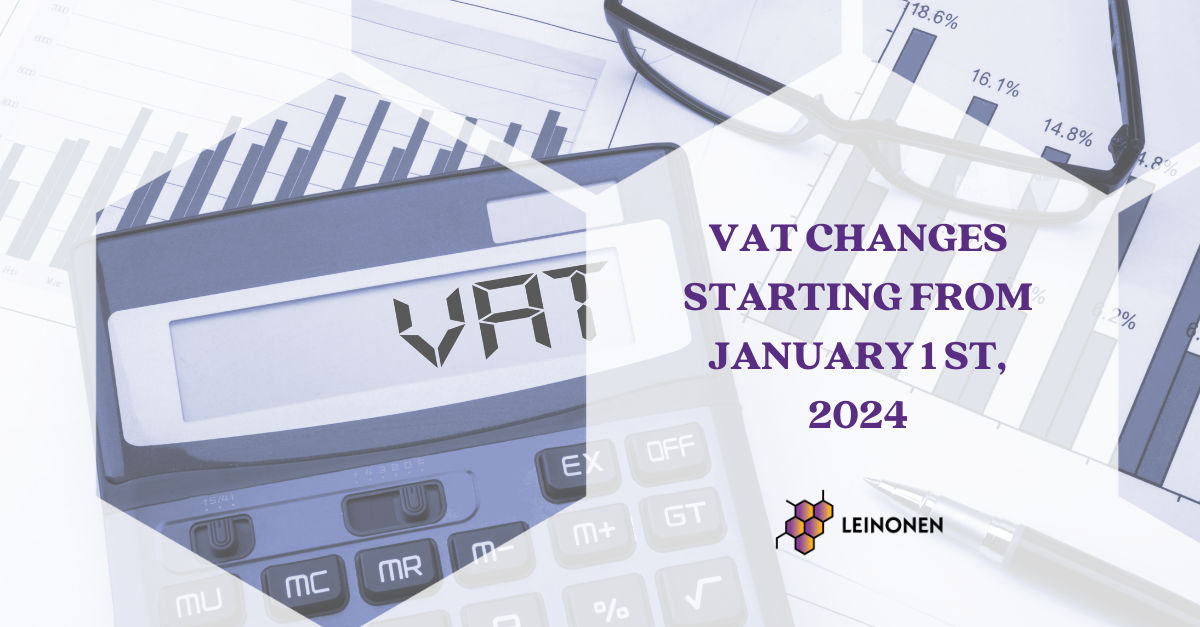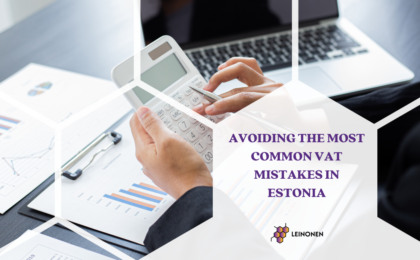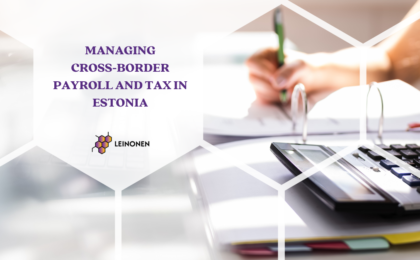Changes to the Estonian Value Added Tax (VAT) Act have long been a focal point for companies. Starting from January 1, 2024, new regulations will come into effect with the aim of adapting VAT procedures to evolving economic and legal needs. These changes may affect entrepreneurs in various ways, so it is important to stay informed about the new provisions.
Transition provisions related to the 2% increase in the standard VAT rate
First provision: If a taxable item or service is taxed at the standard rate, a cash-basis VAT accounting user can still pay VAT at the 20% rate for goods or services delivered after December 31, 2023, until December 31, 2025, if an invoice was issued to the buyer and the goods were dispatched, made available, or the service was provided before January 1, 2024.
Second provision: A taxable person has the right until December 31, 2025, to apply the 20% VAT rate in the case of the sale of taxable goods or the provision of services based on a written agreement concluded before May 1, 2023. This applies if the relevant contract specifies that the price of the goods or services includes VAT or is subject to a 20% VAT rate, and the contract does not provide for a price change due to a possible change in the VAT rate. It’s important to note that the second transition provision applies to transactions related to long-term contracts, such as those involving real estate.
Eight illustrative cases related to the transition provisions of the standard VAT rate:
- A company issued an advance invoice for the entire cost of the goods in December 2023, which the buyer paid in December 2023. The goods were delivered to the buyer in January 2024. Revenue was generated entirely in December 2023 and taxed at a 20% VAT rate.
- A partial advance payment was made for the goods in 2023, and the seller declared it at a 20% VAT rate. The goods were delivered, and the remaining amount was paid in 2024. The advance payment is taxed at a 20% rate, and the remaining part of the revenue generated in 2024 is taxed at a 22% VAT rate.
- A company sells goods in 2023 at a 20% rate. The goods are returned in 2024. When crediting the specific previously issued invoice for the return of the goods, the credit note has a VAT rate of 20%, as on the original sales invoice.
- A capital lease agreement was concluded before May 1, 2023, stating that VAT of 20% is added to the price, and the agreement does not provide for an increase in the price of the goods in case of a change in the VAT rate. The goods are delivered after January 1, 2024 (but before December 31, 2025). As there is a written agreement specifying the VAT rate of 20% and the agreement does not allow for an increase in the final price of the goods in case of a change in the VAT rate, the VAT rate of 20% can be used when disposing of the item if the delivery, which generates revenue exceeding the advance payment, takes place before December 31, 2025.
- A financial lease agreement was concluded before May 1, 2023, and an advance payment was made in 2023, taxed at a 20% rate. The goods are delivered in 2024. Since it is not known in this case that the agreement was concluded before May 1, 2023, the time of occurrence of the turnover must be considered. Revenue is generated in 2023 from the advance payment and taxed at a 20% rate, and the remaining part of the revenue generated in 2024 is taxed at a 22% rate.
- A cash-basis VAT taxpayer provided a service and issued an invoice for it in December 2023, but the buyer paid for the service in January 2024. According to § 46 (24) of the transition provisions, the service is taxed at a 20% VAT rate, although the turnover of the cash-basis VAT taxpayer occurs in January 2024 according to the receipt of the money.
- A customer rents a device for the period from December 1, 2023, to March 31, 2024. What VAT rate applies when settling the device rental for this period? There are several possibilities:
- If the rental invoice is issued for the entire period together and no advance payment is made, the time of occurrence of the turnover is March 2024, and the entire service is taxed at a 22% VAT rate.
- If the entire rental amount is paid in advance in 2023, the time of occurrence of the turnover is the month of receipt of the advance payment, and the VAT rate is 20%.
- If a separate invoice is issued for each month of the rental period and the rent is paid in the month following the rental period, the rent for December is taxed at a 20% VAT rate, and the rent for the remaining months is taxed at a 22% VAT rate.
In conclusion, the changes to the Value Added Tax Act in 2024 bring about several significant changes in the business environment. Entrepreneurs should carefully review the new provisions and, if necessary, consult with specialists to ensure their compliance with the new requirements. Timely adaptation to the new regulations can help avoid potential fines and ensure the smooth operation of the company in the future.




